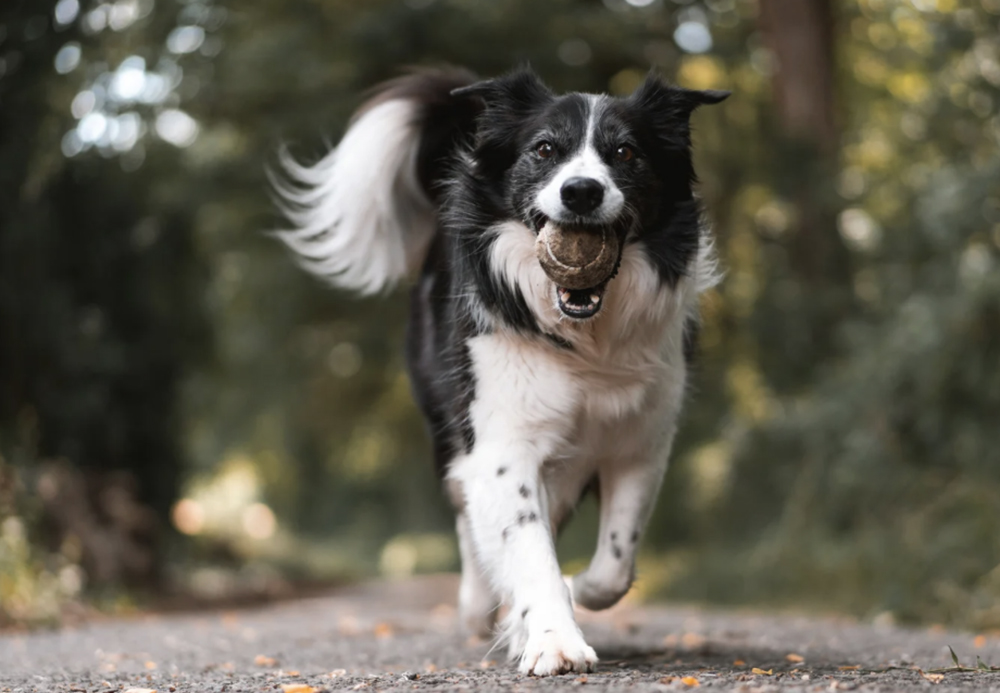By Heidi Clayton
When I take a new puppy in my training program, I always go over the puppy’s physical conformation before we start to train and I allow them to play with other dogs. An alarming trend I have seen in nearly every doodle or poo mix is very loose hips that sadly end up being diagnosed with hip dysplasia. Many people think dysplasia only occurs in large-breed dogs. However, it can occur in any breed and any sized dog. What is important to know before you purchase a breed prone to dysplasia, including anything mixed with a Poodle, is if the breeder does X-rays to confirm the parents are free of hip dysplasia.
The hip is a ball and socket joint. When a dog has dysplasia, the ball does not fit correctly into the socket resulting in the hip grinding or rubbing, which will progressively worsen as the puppy ages. The largest contributing factor to dysplasia is genetics. A puppy can inherit the disease from a parent. While it is almost always genetic, puppies being fed a very high in protein diet that causes the body to grow faster than it should can lead to skeletal disorders. Puppies with dysplasia who are exercised on hard surfaces or run frequently in soft beach sand will frequently be lame as their hip struggles to function properly. Left unnoticed or untreated the dog will develop painful arthritis.
Noticing dysplasia in a puppy takes a keen eye and a familiarity with correct movement in dogs. A puppy should have a natural bounce to their step, but puppies with bad hips will have a swaying or rolling movement in the hips as they try to jog. Symptoms can include a reluctance to jump up on things, climb stairs, or run. They may also have a hard time standing up. They also tend to shift their weight to their front legs causing them to stand oddly or shift their weight to the less painful of their two rear legs. Hip dysplasia can start to surface in puppies as young as four months old. X-rays are the most effective way to diagnose the condition.

The most effective way to prevent hip dysplasia is to not breed dogs that have it. Every breeder who breeds any kind of dog should health test their breeding stock before breeding. The common thread in the dogs I have worked with that have dysplasia is that the person breeding them such as Amish puppy mills or the “backyard breeder” did not have the parents screened to ensure that there is no dysplasia present. A good breeder will have X-rays available and will use an organization like the Orthopedic Foundation for Animals (aka OFA) to have those X-rays verified to be free from dysplasia.
Dysplasia may not result immediately in surgery, as pain management and physical therapy may help bring the dog some degree of relief. There are three surgical procedures used to fix the hip, starting with the femoral head ostectomy (FHO), where the ball of the hip is completely removed. Triple pelvic osteotomy (TPO) surgery is usually done on younger dogs where the pelvic bone is rearranged and rotated. Some cases of dysplasia require total hip replacement (THR). Dysplasia surgery in dogs is expensive and can cost from seven to 10 thousand dollars. Most dogs recover well from the surgery, while they are never quite sound, and regain complete use of their legs after physical therapy.
Aside from being very painful for the dogs, treating dysplasia is expensive. So if you are looking to buy a large breed dog or a mixed breed doodle, take the time to find a breeder that certifies the hips of the parents through OFA, and ask to see the certification.
If you have any questions, please feel free to email me at heidi@fouronthefloordogtraining.net.
Heidi Clayton started Four On the Floor Dog Training to provide positive, reward-based dog training in South Jersey. She breeds, trains and shows bull terriers under the SoraBully’s Bull Terriers kennel name. Email questions to heidi@fouronthefloordogtraining.net or learn more at https://fouronthefloordogtraining.net










